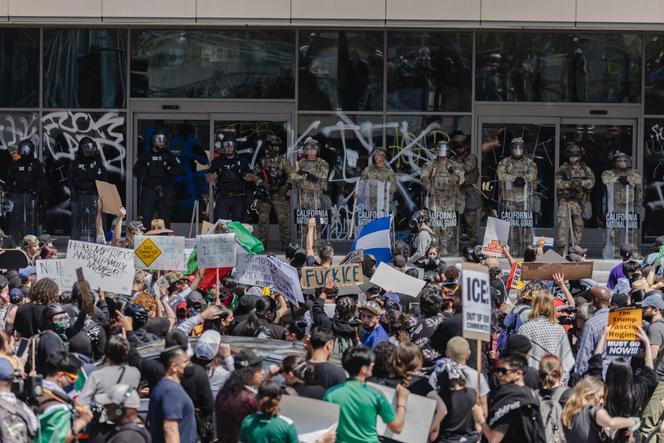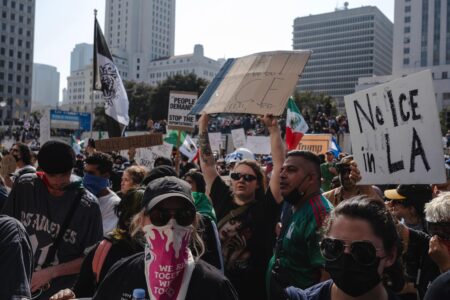Understanding Federal Responses to Civil Unrest: Insights from Los Angeles Protests
Urban Unrest: Past Insights into Political Tensions and Escalation
Major cities have long been focal points for political and social unrest, where underlying grievances can quickly intensify into widespread disturbances. Historical episodes in Los Angeles, such as the Watts uprising in 1965 and the 1992 riots, highlight how systemic inequalities, police misconduct, and incendiary political rhetoric converge to ignite large-scale conflict. Today, the rapid dissemination of details through social media platforms accelerates the mobilization of protesters and amplifies public dissatisfaction, often intensifying the scale and speed of unrest.
Several recurring factors have been identified as precursors to urban upheaval:
- Divisive political discourse that undermines protest legitimacy and deepens societal fractures.
- Intense law enforcement presence paired with confrontational tactics that escalate tensions.
- Persistent economic and social inequalities that fuel frustration within marginalized populations.
| Incident | Trigger Event | Consequences |
|---|---|---|
| Watts Uprising (1965) | Arrest of Marquette Frye | Six days of violent unrest, meaningful property destruction |
| Los Angeles Riots (1992) | Acquittal of officers in Rodney King beating | Over 50 fatalities, extensive looting and arson |
| George Floyd Protests (2020) | Death of George Floyd by police | Nationwide demonstrations, sporadic violence |
The Influence of Trump’s Language on Protest Atmosphere in Los Angeles
Former President Donald Trump’s communication style, characterized by provocative and polarizing statements, has played a significant role in shaping the dynamics of protests in Los Angeles.His tendency to brand demonstrators as “radicals” or “lawless agitators” has often intensified divisions, encouraging more aggressive responses from both law enforcement and counter-protest groups. This adversarial framing tends to perpetuate cycles of confrontation, reducing opportunities for constructive dialog.
Core aspects of Trump’s rhetoric affecting protest environments include:
- Portraying protests as dire threats: Justifies increased security measures and crackdowns.
- Employing divisive language: Deepens societal polarization and alienates communities.
- Direct appeals to police and armed groups: Spurs mobilization of security forces and militias near demonstrations.
| Rhetorical Approach | Short-Term Effect | Long-Term Consequence |
|---|---|---|
| Us-versus-Them Narrative | Increased clashes between protesters and police | Entrenched social divisions |
| Fear-Based Messaging | Mobilization of opposition groups | Normalization of aggressive policing |
| Direct Orders to Security Forces | Escalation of violence at protests | Potential erosion of civil rights |
Grassroots Initiatives and Policing Tactics Amid Rising Tensions
In response to the surge in demonstrations, community organizations in Los Angeles have rapidly organized efforts focused on fostering communication and reducing conflict. Trained volunteers act as mediators, bridging gaps between protesters and law enforcement to prevent violent outbreaks. These grassroots peacekeeping initiatives emphasize the protection of peaceful assembly rights while discouraging escalation.
Meanwhile, law enforcement agencies are adapting their strategies by integrating lessons learned from previous unrest. The approach balances a visible police presence with rapid deployment units designed to swiftly contain disturbances without provoking further conflict.Incorporating community policing principles, officers are preparing for a spectrum of scenarios, from peaceful marches to potential riots. Key tactics include:
- De-escalation training for officers on the front lines
- Widespread use of body-worn cameras to enhance accountability
- Partnerships with local mediators during protests
- Selective use of non-lethal crowd control methods
| Strategy | Purpose | Anticipated Result |
|---|---|---|
| Community Liaison Teams | Facilitate communication between parties | Fewer misunderstandings and calmer interactions |
| Rapid Response Units | Quickly address flare-ups | Reduced property damage and injuries |
| Obvious Examination Procedures | Ensure accountability for incidents | Improved public confidence |
Policy Lessons from Historical Protests: Emphasizing Dialogue and De-escalation
Examining past protest movements across the U.S. offers valuable guidance for developing policies that prioritize peaceful resolution and open communication during periods of civil unrest. A consistent takeaway is the critical need for restraint in law enforcement responses. Overreliance on militarized tactics and excessive force—such as widespread tear gas deployment—tends to inflame tensions, provoke larger crowds, and erode public trust. In contrast, approaches that foster dialogue between officials and protest leaders help reduce conflict and support peaceful expression.
Effective policy frameworks frequently enough include:
- Clear and transparent communication to articulate intentions and enforce rules fairly.
- Comprehensive de-escalation training for police personnel.
- Independent monitoring mechanisms to uphold accountability and prevent abuses.
| Factor | Effect on Protests | Recommended Policy Action |
|---|---|---|
| Militarization of Police | Heightened violence and fear | Restrict use of military-grade equipment |
| Community Engagement | Lowered confrontations | Create ongoing dialogue forums |
| Clarity | Increased public trust | Regular, open briefings to the public |
Final Thoughts: Navigating the Complexities of Civil Unrest Management
As protests continue to unfold in Los Angeles, historical experience highlights the delicate challenges posed by the federal government’s decision to intensify its presence. Past patterns suggest that increased federal intervention often correlates with escalated confrontations and deeper societal rifts. Both residents and analysts remain vigilant, recognizing that the strategies implemented now will substantially influence the future of public trust and civil discourse. These events underscore the ongoing struggle to balance effective law enforcement with the preservation of constitutional freedoms—a balance that history repeatedly shows is difficult but essential to achieve.



